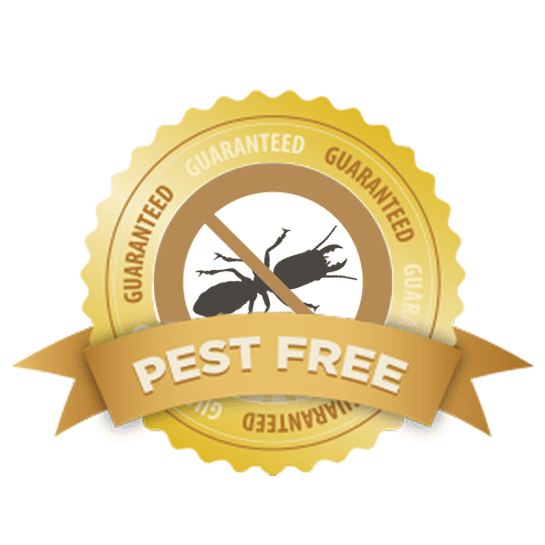Bed Pest Therapy Failure: Contrasting Chemical Vs. Non-Chemical Solutions
In the realm of parasite control, particularly when managing the persistent concern of bed bugs, the selection between chemical and non-chemical therapy remedies can be a pivotal one. Both methods supply distinct advantages and drawbacks, influencing factors such as efficiency, security factors to consider, and general expense. By analyzing the nuanced details of each technique, a clearer understanding of which path to pursue in attending to a bed pest invasion can be obtained.
Efficiency of Chemical Therapies
Chemical therapies for bed insect invasions have been extensively identified for their fast and potent effectiveness in eliminating these parasites. When taking into consideration the efficiency of chemical treatments, it is vital to recognize that they can give a extensive and fast solution to a bed insect problem.
Furthermore, chemical treatments have the benefit of offering residual impacts, implying that they can remain to get rid of bed pests even after the preliminary application. This residual action is especially valuable in combating any possible re-infestations. Additionally, the fast activity of chemical treatments can bring relief to individuals encountering severe bed insect infestations, enabling them to reclaim control of their home swiftly.
Safety And Security Worry About Chemical Solutions
One vital aspect that requires mindful consideration when making use of chemical options for bed insect therapy is making sure the safety of owners and the setting. Direct exposure to certain chemicals utilized in bed pest treatments can lead to respiratory system problems, skin irritation, or other damaging reactions, specifically in individuals with pre-existing problems or level of sensitivities.
Additionally, the ecological effect of chemical solutions is one more considerable factor to consider. Some pesticides utilized in bed pest treatments may be harmful to advantageous pests, wildlife, and environments if they seep right into the soil or water systems. It is necessary to use chemical treatments judiciously, complying with safety and security guidelines, and thinking about much less poisonous alternatives to reduce these dangers and make certain the efficient and risk-free administration of bed pest problems.
Advantages of Non-Chemical Approaches
Considering the prospective safety issues and environmental influence connected with chemical remedies for bed bug treatment, discovering non-chemical approaches presents a promising choice with several distinct advantages. Non-chemical approaches offer a much safer alternative for homes, especially those with people, family pets, or kids conscious extreme chemicals. These techniques get rid of the risks of exposure to toxic materials, minimizing the capacity for unfavorable health results. Moreover, non-chemical treatments are environmentally pleasant, as they do not add to air or water contamination, making them a sustainable selection for bug control.
In addition, non-chemical options can be effective in targeting bed pests, including hard-to-reach areas where chemical therapies might not pass through - A1 charlotte pest control companies. Approaches such as warm therapy, vacuuming, steam cleaning, and bed mattress encasements give comprehensive elimination without the usage of dangerous chemicals.
Limitations of Non-Chemical Treatments

In addition, non-chemical therapies frequently require several applications to attain successful removal. This can be lengthy and might not always guarantee total elimination of all bed pests and their eggs, particularly in hard-to-reach or concealed areas.
Furthermore, the success of non-chemical treatments heavily depends on correct execution and thoroughness, which can be testing for people without specialist experience. Inadequate application of non-chemical methods may result in incomplete elimination, bring about relentless problems and the see this demand for added treatments.
Therefore, while non-chemical treatments have their advantages, it is essential to acknowledge these limitations and consider them when identifying the most effective method for managing bed insect invasions.
Expense Contrast: Chemical Vs. Non-Chemical Options
Given the constraints related to non-chemical therapies, an important facet to examine in the context of bed pest administration is the price comparison between chemical and non-chemical alternatives. Chemical treatments generally include the application of pesticides by professionals, which can range from $250 to $900 per room, depending on the extent of the invasion and the size of the location to be dealt with. In comparison, non-chemical treatments like heat therapy or heavy steam can be much more costly, with costs varying from $1,000 to $6,000 for an entire home. While the first expense of chemical treatments may appear lower, numerous treatments might be called for to completely eradicate the problem, potentially increasing the total expense. On the various other hand, non-chemical choices might supply a much more lasting and environmentally friendly remedy, although they can be cost-prohibitive for some individuals. Ultimately, when taking into consideration the cost of bed insect treatment alternatives, it is necessary to evaluate the ahead of time expenses versus the performance and lasting sustainability of the selected technique.
Conclusion

Thinking about the potential security problems and environmental influence connected with chemical options for bed insect therapy, exploring non-chemical pop over here approaches presents an encouraging choice with a number of unique advantages.Given the restrictions associated with non-chemical treatments, an essential element to examine in the context of bed pest management is the cost comparison in between chemical and non-chemical alternatives. In comparison, non-chemical therapies like warmth therapy or heavy steam can be a lot more costly, with expenses ranging from $1,000 to $6,000 for a whole home. While the first expense of chemical therapies may appear reduced, multiple treatments index might be needed to completely get rid of the problem, potentially increasing the overall expense.In verdict, when comparing chemical and non-chemical bed pest treatment choices, it is essential to consider effectiveness, safety and security, advantages, restrictions, and price.